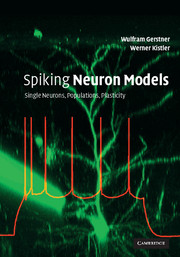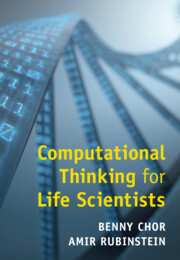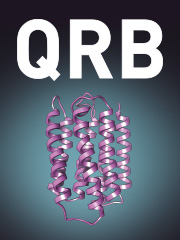Neuronal Dynamics
What happens in our brain when we make a decision? What triggers a neuron to send out a signal? What is the neural code? This textbook for advanced undergraduate and beginning graduate students provides a thorough and up-to-date introduction to the fields of computational and theoretical neuroscience. It covers classical topics, including the Hodgkin–Huxley equations and Hopfield model, as well as modern developments in the field such as generalized linear models and decision theory. Concepts are introduced using clear step-by-step explanations suitable for readers with only a basic knowledge of differential equations and probabilities, and are richly illustrated by figures and worked-out examples. End-of-chapter summaries and classroom-tested exercises make the book ideal for courses or for self-study. The authors also give pointers to the literature and an extensive bibliography, which will prove invaluable to readers interested in further study.
- Retains the best elements of Gerstner and Kistler's earlier book, Spiking Neuron Models
- Will appeal to neurobiologists and theoreticians alike
- Python source code for numerical simulations is available online
Product details
July 2014Adobe eBook Reader
9781139990851
0 pages
0kg
280 b/w illus. 6 tables 80 exercises
This ISBN is for an eBook version which is distributed on our behalf by a third party.
Table of Contents
- Preface
- Part I. Foundations of Neuronal Dynamics:
- 1. Introduction
- 2. The Hodgkin–Huxley model
- 3. Dendrites and synapses
- 4. Dimensionality reduction and phase plane analysis
- Part II. Generalized Integrate-and-Fire Neurons:
- 5. Nonlinear integrate-and-fire models
- 6. Adaptation and firing patterns
- 7. Variability of spike trains and neural codes
- 8. Noisy input models: barrage of spike arrivals
- 9. Noisy output: escape rate and soft threshold
- 10. Estimating models
- 11. Encoding and decoding with stochastic neuron models
- Part III. Networks of Neurons and Population Activity:
- 12. Neuronal populations
- 13. Continuity equation and the Fokker–Planck approach
- 14. The integral-equation approach
- 15. Fast transients and rate models
- Part IV. Dynamics of Cognition:
- 16. Competing populations and decision making
- 17. Memory and attractor dynamics
- 18. Cortical field models for perception
- 19. Synaptic plasticity and learning
- 20. Outlook: dynamics in plastic networks
- Bibliography
- Index.








